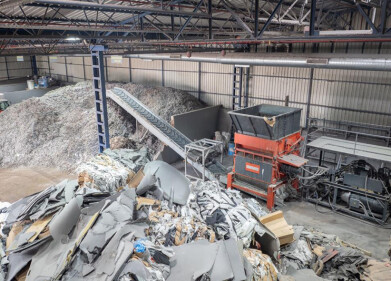Hazardous waste
Better management of e-waste
Jan 19 2012
More of the EU’s broken fridges, phones and gadgets are set to be collected and recycled, following MEPs’ approval on Thursday of new targets agreed with Council. The update to Waste Electrical and Electronic Equipment (WEEE) legislation offers consumers new possibilities to return small waste items to retailers and will also cut red tape for businesses.
"After difficult negotiations I am very satisfied that we have agreed ambitious but achievable collection rates with Council. Europe will now recover more raw materials, which is excellent news both for the economy and for the environment", said rapporteur Karl-Heinz Florenz (EPP, DE) after the agreement was overwhelmingly approved in plenary by a show of hands.
Once Council formally approves the updated directive and it enters the EU lawbooks, Member States will have 18 months to update their national legislation.
Collection and recycling
All Member States must increase their collection of e-waste, regardless of whether they already meet the current flat-rate target of 4kg per person per year.
By 2016, most will have to collect 45 tonnes of e-waste for every 100 tonnes of e-goods put on sale three years previously. By 2019, this must rise to a rate of 65%, or alternatively they can collect a comparable figure of 85% of e-waste generated. Ten countries needing to improve their facilities will have an interim target of 40% and may take until 2021 to reach the final target.
To help everyone play their part, Parliament successfully argued that consumers should be allowed to return small items (such as mobile phones) to any larger electrical goods shop, without needing to buy a new product.
Better processing will help to recover more valuable raw materials and prevent harmful substances going to landfill. Recycling rates will need to rise to 80% for some categories of goods. The best recycling techniques should be used and products should be designed to be recycled more easily.
E-waste exports
MEPs also negotiated tighter controls on illegal shipments, to prevent e-waste being processed in countries where conditions are often hazardous to workers and the environment. The burden of proof moves from customs officials to exporters, who must properly demonstrate in future that goods are being shipped for repair or reuse as appropriate.
Cutting red tape
Producers of e-goods will continue to contribute financially towards meeting processing targets. They will benefit from simplified registration and reporting requirements and will be able to appoint representatives instead of needing to establish a legal seat in each country where they operate. New measures will prevent double charging of registration fees within Member States.
Events
Apr 08 2025 Targi Kielce, Poland
Apr 08 2025 Bahrain
Apr 10 2025 Beijing, China
Apr 10 2025 Beijing, China
Apr 15 2025 Moscow, Russia














